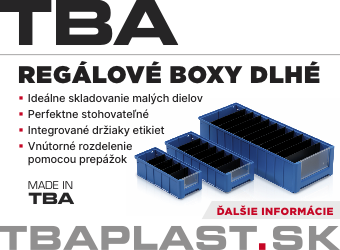GRAFE: Filament identification directly in the plastic for originality check
The GRAFE GROUP, Blankenhain, has developed a masterbatch for the identification of materials in industrial 3D printing. „This means that the authenticity of licensed materials can be reliably and unmistakably determined already in the filament processed in this additive manufacturing process“, explains Lars Schulze, Head of Colour Development and Material Sciences.
At present, he sees the main areas of application as prostheses in medical technology, but also system-relevant machine or automotive parts that have to withstand warranty or recourse claims. Nevertheless, other sectors such as furniture, electronics, or consumer goods could also be interesting for the originality check.
„In the future, more and more products and spare parts will come from 3D printers. Already today, their number is increasing rapidly in private and industrial use. If one now imagines that spare parts for licensed products are printed from inferior and untested material, recourse claims or warranty claims would be forfeited and, in the worst case, property damage or personal injury would occur“, Schulze reports. This is where GRAFE's idea comes in: „We work a marker into the filament, which can be used to check whether the correct material has been used. It is permanently in the component and cannot be removed. Due to its nature, the marker offers perfect protection against counterfeiting and proof of originality.“
As an exclusive development partner, GRAFE relies on the security pigments from Tailorlux. The company also supplies the matching Tailor-Scan 4 hand-held measuring device, onto which a reference file set to the safety marking is loaded. It then indicates whether the respective marking is present or not. „The operation is very straightforward. The originality of the plastic used can be checked directly from the filament to the component - even through glass or foil packaging“, explains the expert. Furthermore, certification laboratories could also check the material. The inspection electronics to be used can also be integrated directly into an existing 3D printing system, apart from the hand-held scanner!
 | |
Schulze points to the significant basic idea with which the safety principle can be consistently applied when testing the filament takes place directly in the printing unit. However, this must be integrated by the manufacturers of the 3D printers. „When the spool is inserted, a sensor in the printer can check the safety markings in the filament. Printing starts only when it is ensured that the material is the right one. Unlike the principle of colour printers, which use electronics to determine whether the original colour cartridge has been inserted, the 3D printer can directly check the material”
„Our solution is already developed and works“, says Schulze. So far, the marker has mainly been used for PLA and PETG (glycol). However, it can also be used in PA and PC. There is no influence on the colour. Due to a wide selection of markers, almost any plastic can be equipped, he assures. „The batch dosages are comparatively low and can be realised from one percent. The colour has the greatest influence. Components coloured with CarbonBlack require a slightly higher dosage than others. Carbon fibres also influence the result. Ultimately, it can be said that each filament can be marked with a maximum dosage of three percent.“
GRAFE is currently looking for industrial partners to develop appropriate products or printers. According to the Head of Colour Development and Material Sciences, the costs for marking depend on the desired protection. „A basic marker that is not developed specifically for a company, an industry, or a particular product is comparatively cheap. A solution that can be used worldwide exclusively for only one specific product is therefore more cost-intensive“, says Schulze.
- autor:
- GRAFE Polymer Solutions GmbH


















.jpg)

